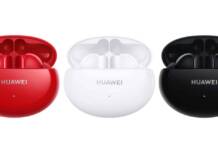IBM Fingernail Sensors – AI in Disease Detection
We move our hands to grip objects for almost a thousand times a day. That’s why researchers of IBM have created tiny fingernail sensors designed to help detect and monitor disease progression via AI analysis and grip strength. This wearable, the wireless device continuously measures how a person’s fingernail bends and moves. With the help of AI, these fingernails analyze the collected data to predict diseases.

This project began as an attempt to capture the health condition of people with Parkinson’s disease. To find a new cure for this disease scientists needed to follow the effect of a type of cure on a patient. And to monitor every single second of treatment of patients IBM created these Fingernail Sensors. But now, powered with AI these can do something more than just monitoring, it can predict diseases and disorders based on the grip and finger movement of a person.
Throughout our day we interact with objects using our hands. We sense pressure, temperature, surface textures and more with our hand. The research team of IBM realized that it might be possible to extract information out of how fingernails of a person bend. And based on this idea IBM created this fingernail sensor.
How does the system work?
Since human nails are tough and are dead cells, so IBM decided to glue the sensor system to a fingernail. Experiments from IBM demonstrated that consistent signals can be extracted from the fingertips of a human using these sensors.
IBM also found it is possible to detect subtle finger movements from nail deformation. The AI developed was able to differentiate typical daily activities like turning a key or using a screwdriver. And even more subtle activity like finger writing can also be detected by these sensors. IBM trained a neural network to almost accurately detect digits written by a finger wearing the sensor.
If you want to know more you can check this video below, or you can read the post from IBM here.





